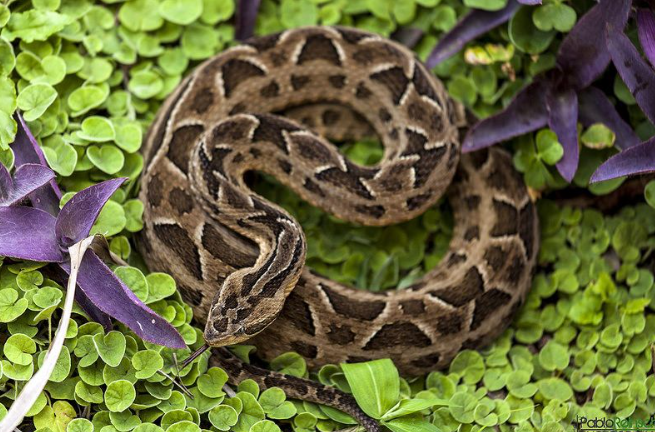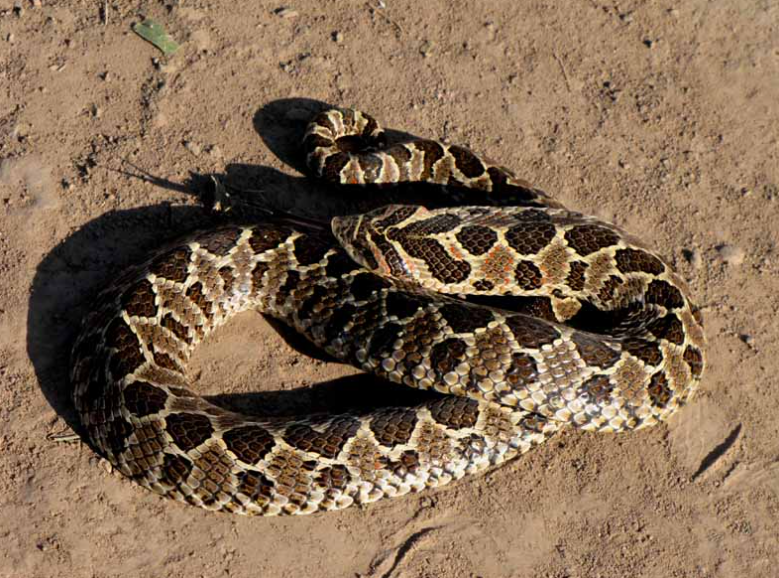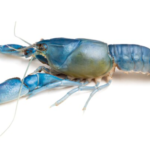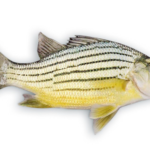Yarará: South America’s Poisonous Snake
The South American yarará, technically known as Bothrops alternatus, is a highly poisonous pit viper. Also called the Southern crotaline or the Argentine pit viper, the yarará uses its strong venom mainly for defence and hunting. This venomous snake, native to various ecosystems in South America, including Argentina, Uruguay, and parts of Paraguay, has gained a place in local mythology. Its reputation for being lethal and elusive contributes to its mysterious status. This article will explore the yarará’s physical traits, habitat, behaviour, venom, and significance. We will also examine human interactions with the snake and the measures used to protect both human and snake populations, helping to avoid snakebites.
Quick Top 10 Facts about Yarara Snake
| SCIENTIFIC NAME | Bothrops jararaca (Yarara Snake) |
| CLASSIFICATION | KINGDOM: Animalia CLASS: Reptilia ORDER: Squamata FAMILY: Viperidae PHYLUM: Chordata GENUS: Bothrops |
| SIZE | Typically 1.5 to 2 meters in length |
| HABITAT | Forests, grasslands, and dry areas in Brazil, Paraguay, and Argentina |
| DIET | Carnivorous – Feeds on small mammals, birds, amphibians, and reptiles |
| SPECIES | Yarara Snake (Bothrops jararaca) |
| COUNTRY | Found in Brazil, Paraguay, and parts of Argentina |
| GESTATION PERIOD | Approximately 6-9 months (Viviparous, gives live birth) |
| LIFE SPAN | Up to 20 years in the wild |
| CONSERVATION STATUS | Listed as “Least Concern” (LC) by the IUCN, but human-wildlife conflict and habitat destruction are threats |
The Yarará’s Physical Characteristics
Large and heavy-bodied, the yarará has distinct features that set it apart from other snake species. It typically reaches 1.5 to 2 metres (5 to 6.5 feet) in length, though some individuals can grow longer under the right conditions. Its sturdy physique makes it well-suited for ambushing prey.
Colouration and Camouflage
The yarará’s back features dark, uneven, triangular patterns, with its colouring ranging from light brown or grey to reddish-brown. This pattern aids in its camouflage, helping the snake blend in with the dry grasslands or woodland floors where it hunts and resides. The large, triangular head of the yarará signals its membership in the pit viper family, distinguishing it from local non-venomous snakes.
Heat-Sensitive Pit Organ
One of the yarará’s most distinctive features is the pit organ, a heat-sensitive organ located between its eyes and nostrils. This organ allows the snake to detect the heat of its prey, making it a skilled predator, especially at night or in low light. This ability is essential for hunting birds, amphibians, and small animals.

Venomous Fangs and Hunting Technique
The yarará’s large, hollow fangs can pierce deeply into its victim, injecting venom. The snake strikes quickly and precisely when it feels threatened. The sharpness of its fangs ensures that the yarará can immobilise its prey before it can escape.
Distribution and Habitat
Yarará snakes are found primarily in South America, with a range extending across Argentina, Uruguay, Paraguay, and parts of Brazil. They inhabit various environments, including savannas, grasslands, and forests, seeking shelter in underbrush, long grasses, or rocky outcrops. These snakes are highly adaptable and can live in wet forests, scrublands, and both dry and semi-arid regions.
Geographical Range of the Yarará
The yarará is commonly found in the lowland areas of Paraguay. In Argentina, it typically resides in the central and northern regions. Known for its cunning and secretive nature, the yarará is often difficult to spot in the wild. Although it is potentially dangerous, the snake avoids human contact unless provoked or threatened.
Ideal Habitat for the Yarará
The snake thrives in habitats that offer both open spaces and hidden resting places, such as under fallen leaves or rocks. These environments allow the yarará to hunt and relax. In addition, the snake can find its primary food sources, including rodents and small reptiles, in such habitats. As skilled climbers, yarará snakes are also found in trees when seeking shelter or a place to nest.
Venom and Methods of Hunting
The yarará has one of the strongest and most potent venoms of all South American snakes. Its venom consists mainly of a mixture of neurotoxins and proteolytic enzymes that immobilise and digest its prey. The venom causes severe damage to internal organs and tissues, with a particularly harmful effect on the neurological system. The victim usually experiences rapid tissue death, paralysis, and bleeding, although the strength of the venom depends on the size of the snake and the location of the bite.
Hunting Strategy and Prey Capture
The yarará relies on its heat-sensitive pits to detect prey, typically birds, amphibians, and small mammals. Even in low-visibility situations or darkness, the snake can accurately target its prey. The snake swiftly strikes and injects venom with its sharp fangs, immobilising or killing the prey before consuming it.
Feeding and Digestion
Once the yarará captures a suitable meal, it consumes it whole, thanks to its flexible jaws that accommodate food larger than its head. Unlike some snake species, the yarará does not suffocate its prey. Instead, it relies solely on the effects of its venom. Due to its slow metabolism, the snake can go without food for extended periods—sometimes for weeks or even months.
Conduct and Attitude
Yarará snakes are solitary by nature and are most active at night (nocturnal). However, they may occasionally be active during the day, particularly in cooler climates. Although they generally avoid contact with people and larger animals, they are fiercely protective of their territory and will defend it if threatened. Rather than attacking, the snake prefers to remain still and blend into its surroundings using its camouflage.
Warning Behaviours and Defensive Attitude
The yarará may display warning signs when threatened, such as loud hissing, rapid strikes, or coiling into a defensive posture. However, it generally does not attack until it feels trapped or provoked. Yarará snakes do not actively hunt or pursue humans, and bites are rare, usually occurring when the snake is inadvertently disturbed.
Dangerous Yet Non-Aggressive
Although the yarará is highly dangerous due to its venomous bite, it is not typically aggressive. People living or travelling in areas where this snake is found must be aware of its presence and take necessary precautions. Many locals exercise caution while working or trekking in areas inhabited by the yarará, as they are familiar with the snake’s appearance and behaviour.
Human-Snakebite Prevention and Interactions
Encounters with the yarará are usually preventable. However, when they do occur, they can be hazardous, especially if the bite is not treated promptly. Symptoms of a yarará bite include severe pain, swelling, bruising at the bite site, nausea, difficulty breathing, and, in extreme cases, death. If left untreated, the venom can cause long-term organ damage and tissue necrosis, which may require amputation in severe cases.

Treatment for Yarará Snakebites
The most common treatment for yarará bites is the administration of antivenom, which is available in many regions where the snake is found. After a bite, it is crucial to seek immediate medical attention. First aid techniques, such as immobilising the affected limb and halting the spread of venom, can improve the chances of a full recovery.
Public Awareness and Precautionary Measures
Public awareness campaigns in many areas aim to educate people on the importance of avoiding contact with venomous snakes, like the yarará. When venturing into areas where snakes are common, people are advised to wear long trousers and sturdy footwear. To further reduce the risk of snakebites, it is recommended to use protective gloves and gear when working in forests.
Status & Protection of Conservation
Despite its dangerous nature, the yarará is not yet considered an endangered species. However, like many other snake species, it faces threats from agriculture, urbanisation, and habitat destruction. The ongoing expansion of human settlements and agriculture is shrinking the natural habitats of the yarará, potentially leading to a decline in its population and a loss of biodiversity.
Conservation Efforts for the Yarará
Conservation initiatives aim to protect the yarará’s natural habitats by promoting sustainable land-use practices. Certain local laws protect the yarará and other native snake species, making it illegal to harm or kill them. These efforts seek to balance the preservation of the species in the wild with reducing the risk of snakebites to human populations.
FAQ (frequently asked questions) about Yarara Snake
Q: What is a Yarara Snake?
Ans: The Yarara Snake, also known as the Bothrops alternatus, is a venomous pit viper native to South America, particularly in Argentina, Paraguay, and Brazil.
Q: Where do Yarara Snakes live?
Ans: Yarara Snakes are typically found in forested areas, grasslands, and scrublands in South America, particularly in countries like Argentina, Paraguay, and Brazil.
Q: What do Yarara Snakes eat?
Ans: Yarara Snakes are carnivorous and primarily feed on small mammals, birds, and reptiles, using their venom to immobilize prey.
Q: How do Yarara Snakes defend themselves?
Ans: Yarara Snakes defend themselves using their venomous bite, which can immobilize or kill prey and deter potential predators.
Q: How do Yarara Snakes reproduce?
Ans: Yarara Snakes are ovoviviparous, meaning they give birth to live young instead of laying eggs, typically producing a litter of several offspring.
Q: Are Yarara Snakes dangerous to humans?
Ans: Yes, Yarara Snakes are venomous and pose a danger to humans if bitten, but they typically avoid human contact and will only strike if threatened.
Q: How long do Yarara Snakes live?
Ans: Yarara Snakes typically live between 10 to 15 years in the wild, though their lifespan may vary depending on environmental conditions and threats.
Q: What are the characteristics of Yarara Snakes?
Ans: Yarara Snakes are medium to large in size, with a distinctive pattern of brown or gray scales and a triangular head, typical of pit vipers.
Q: Do Yarara Snakes have any natural predators?
Ans: Natural predators of the Yarara Snake include birds of prey, larger reptiles, and some mammals, though their venom helps deter many threats.
Q: Are Yarara Snakes endangered?
Ans: While not currently endangered, Yarara Snakes face threats from habitat loss and human activities, though their populations are stable in many areas.
#YararaSnake, #PitViper, #VenomousSnake, #SnakeSpecies, #ReptileLife, #WildlifePhotography, #SnakesOfInstagram, #SnakeLovers, #NaturePhotography, #WildlifeConservation, #BrazilianSnake, #ReptileKingdom, #JungleLife, #SnakeEyes, #Herpetology
Our sources and references about Yarara Snake
1: Wikipedia
2: Venomous Snakes
3: Reptiles Magazine
4: ARKive


